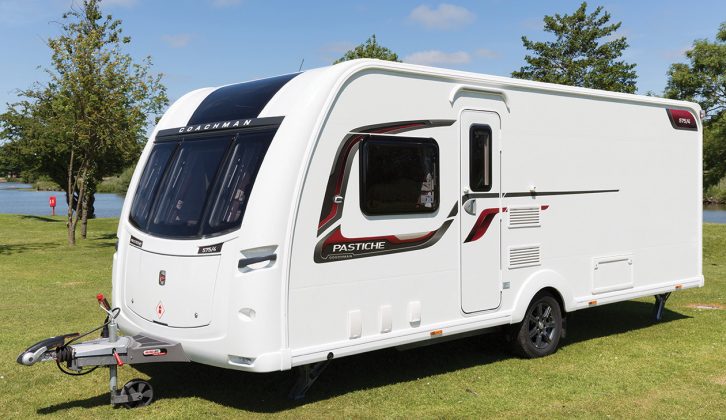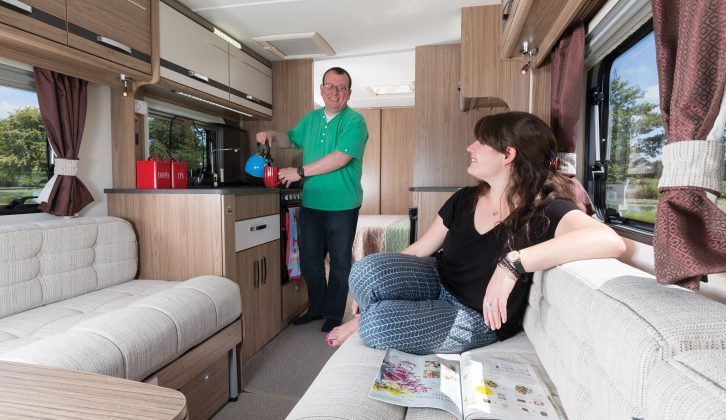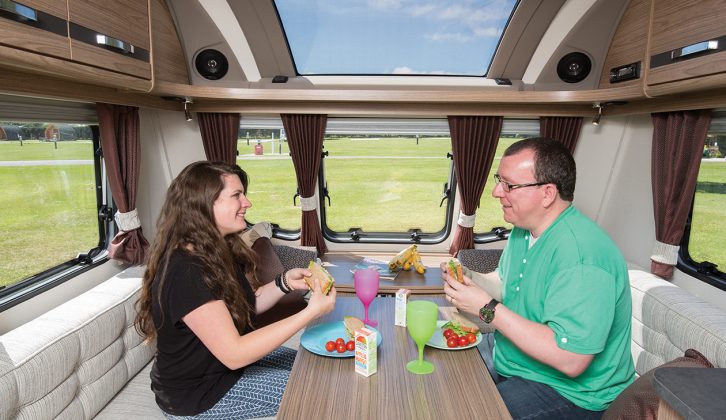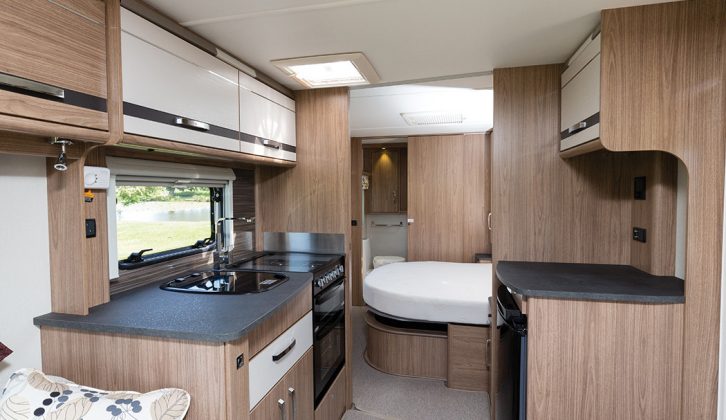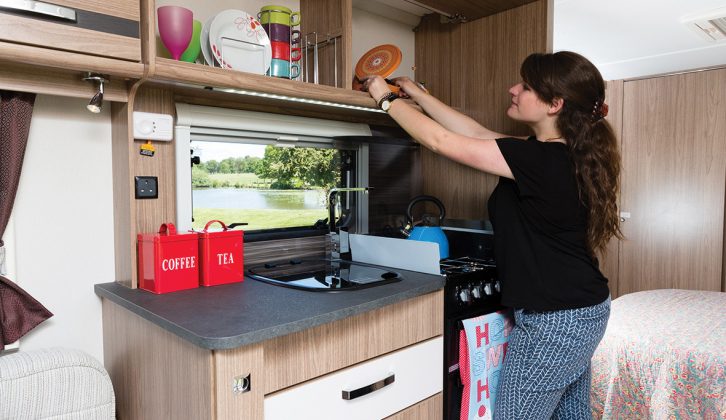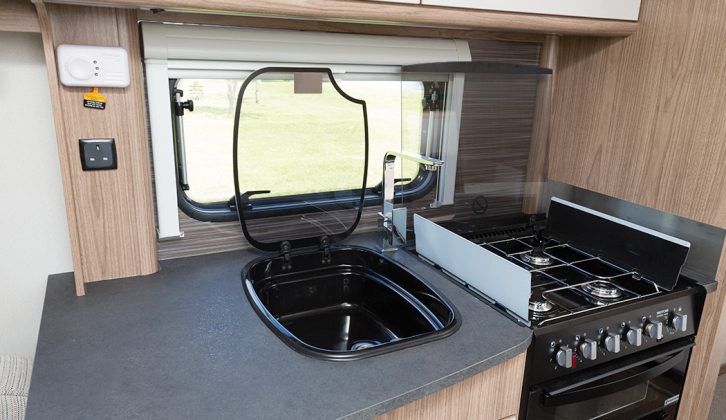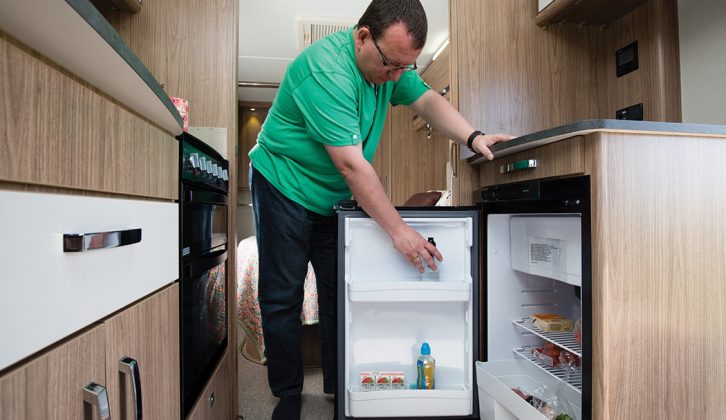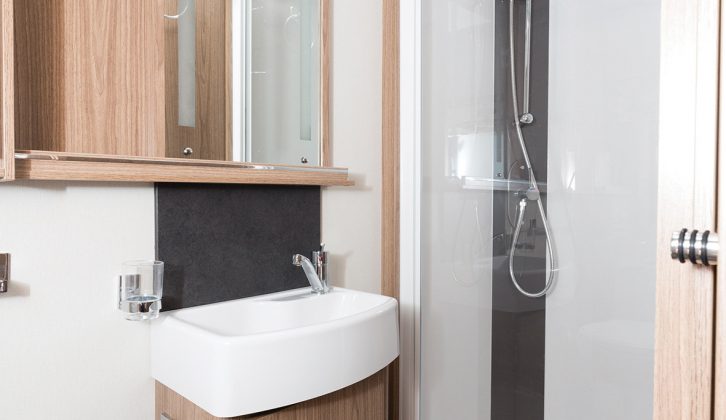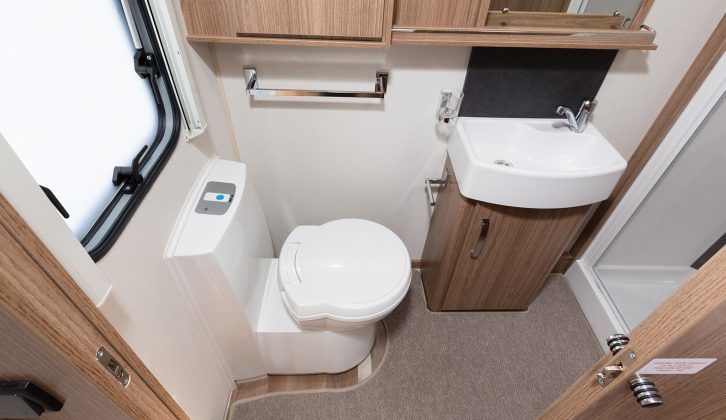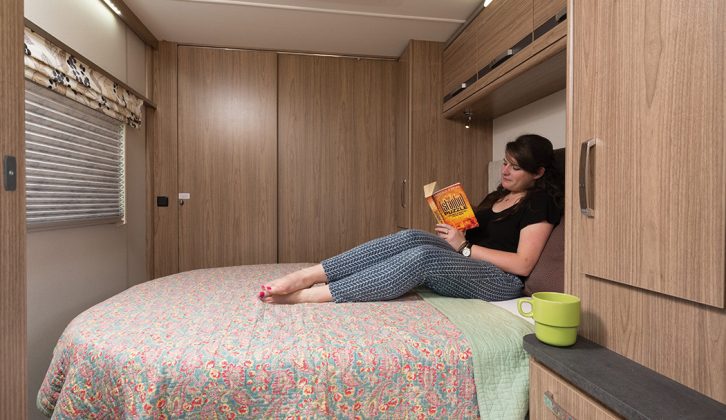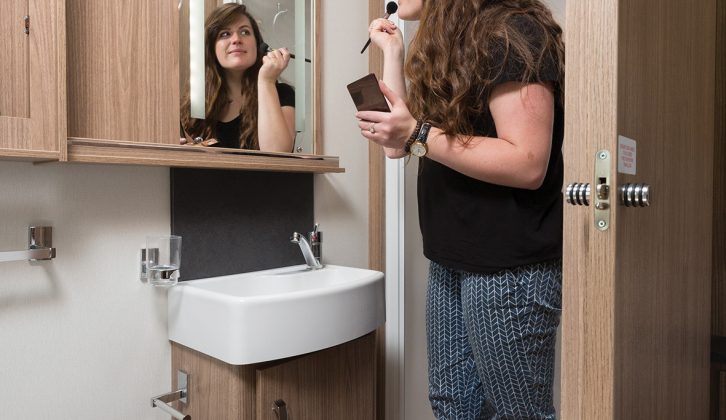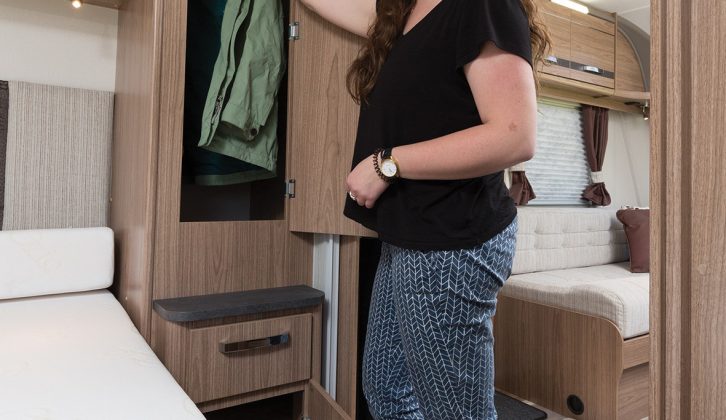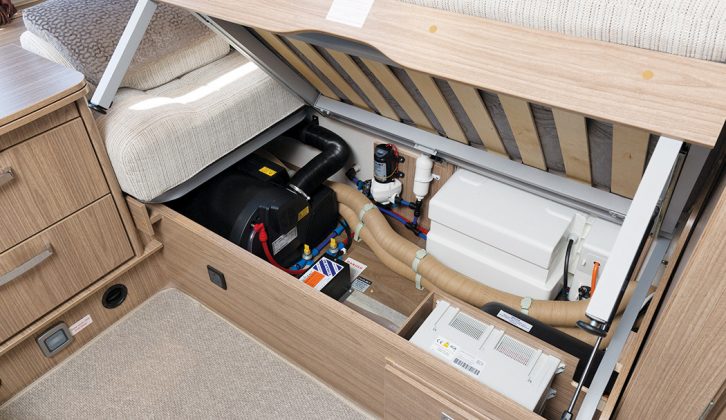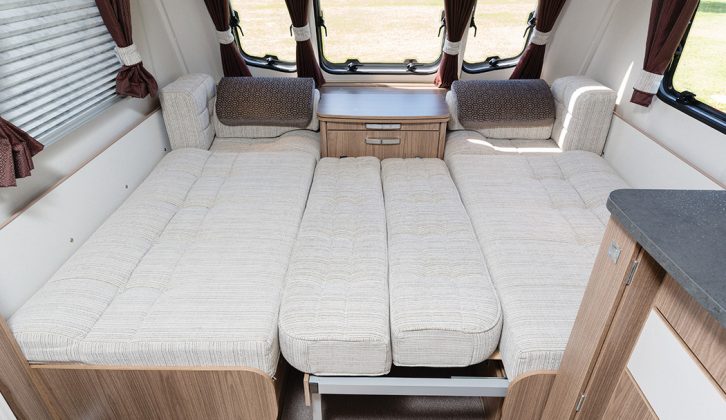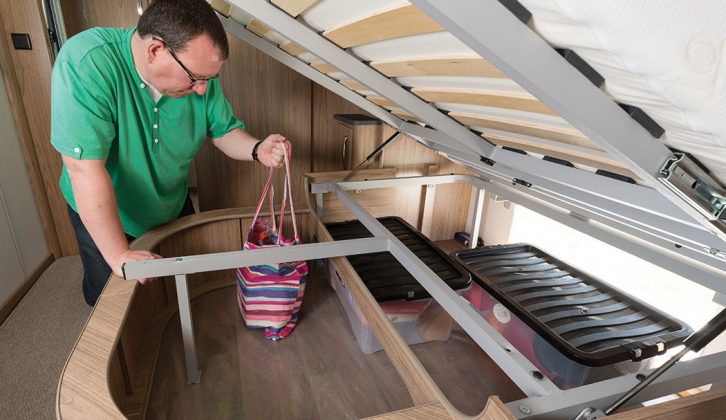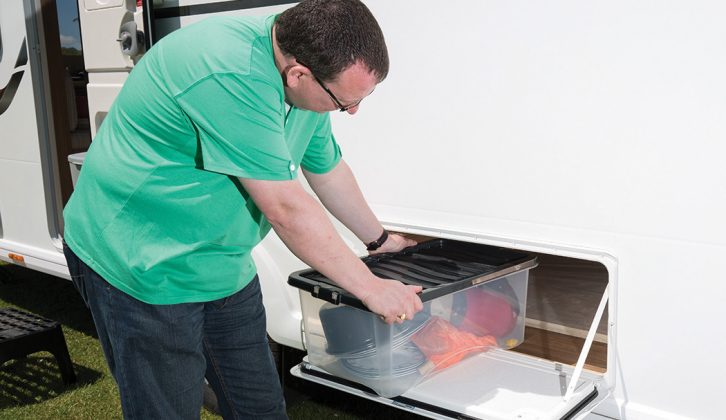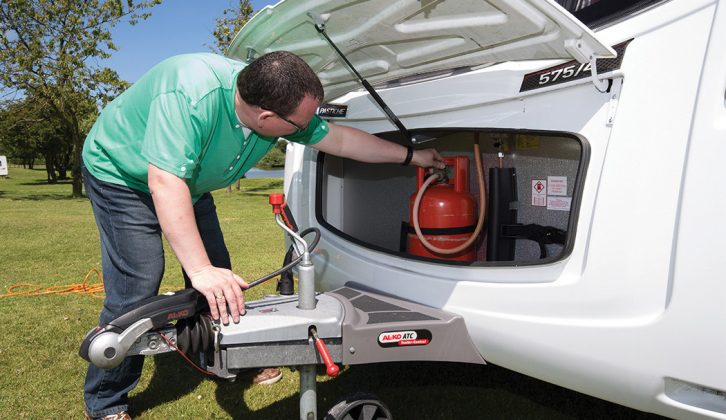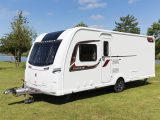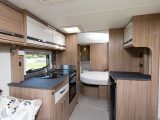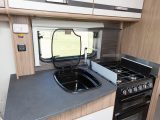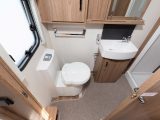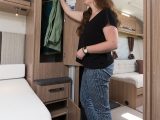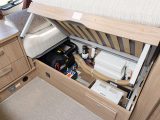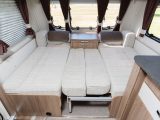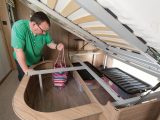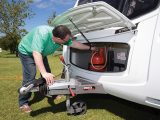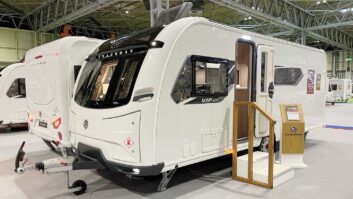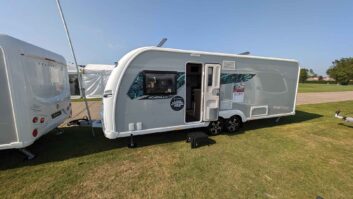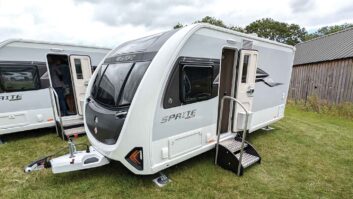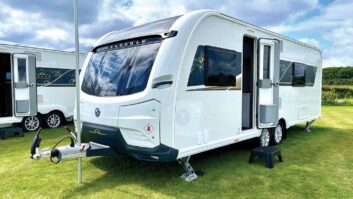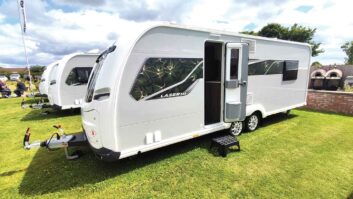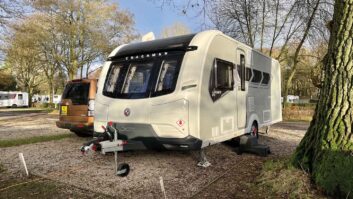Verdict
The Coachman Pastiche 575/4 has some pretty stiff competition from rival British brands such as Sprite, Bailey and Elddis, as well as imported brands such as Adria.
Not only is the Coachman Pastiche 575/4 just one of many such layouts on the market as a whole, but it is also one of three in the Coachman catalogue. The Pastiche has its work cut out to make its mark on buyers’ minds. It weighs and costs more than some rivals, but its style and build quality count in its favour.
There are both positives and negatives to being the middle element in a three-way tussle for caravan buyers’ money.
On the plus side, you tend to have a good compromise in terms of equipment, comfort and price, bettering the cheapie Vision on the former, yet also besting the dearer VIP model on the latter.
On the negative side, you run the risk of losing out to buyers on a budget on the one hand, and those seeking money-no-object luxury on the other.
On balance, we think the Pastiche treads this fine line well, and at just over £21,500, it’s decent value, too.
Pros
Transverse double bed 6ft 2in by 4ft 5in
Plenty of storage
Excellent kitchen
Spacious full-width rear washroom
Good value for a mid-range caravan
Enormous shower
Five-year manufacturer’s warranty
10-year water ingress and body delamination warranty
Cons
Quite expensive for those on a budget
A little modest for those seeking luxury
Front single beds are just 5ft 1in long
It would have been difficult – inconceivable, even – back in the early 2000s to have imagined the impact that fixed-bed layouts would have on what had been, until then, a wholly traditional caravan industry focused on producing beds and bunks that had to be assembled each night.
Of all the possible variations, it’s undoubtedly the current darling of the modern caravan manufacturer’s design department – the transverse island double bed – that’s raised the most eyebrows.
Transverse double beds have been with us for some time, though they started out filling the entire rear section of models bearing Bailey and Eccles badges. Still, they never offered much in the way of benefits over and above the more familiar corner-fixed-bed layout.
That’s not so any more. The advent of sliding mechanisms in bed bases means that occupants can get in and out of bed independently without disturbing partners. Nor is there a need for a chopped-off corner to ease access to the washroom.
Coachman has taken to transverse island double bed layouts in a big way, offering it on its least-expensive Vision, middle-ranking Pastiche and luxury VIP ranges for 2015. Which of the three offers the best balance of value and comfort?
Looking first at the design, it was a brave move on Coachman’s part to allow the entry-level Vision and mid-range Pastiche to share the same bodyshell. We can see the thinking behind the manufacturer’s decision: give the Vision a bit of the Pastiche’s flair and make useful savings on design and production costs at the same time. But has this strategy diluted the appeal of the Pastiche line-up?
We don’t think so. Only those in the know are likely to spot the most obvious differences, specifically the subtly different graphics and the Vision’s lack of a front panoramic sunroof.
Nevertheless, the Pastiche has still got extra appeal, including in its super-smart front and rear panels, nicely contrasting black trim (tail light surrounds, grabhandles) against the glossy white flanks, and super-cool smoked-out alloy wheels.
When it comes to towing, because it’s at the top of the Pastiche tree, you’d expect the 575/4 to be quite a hefty machine. Certainly, the fact that it tips the scales at a full 1565kg when fully laden means that you’ll need a tow car weighing in the region of 1841kg if you prefer your van to weigh no more than 85% of your tug’s kerbweight.
We’ve said it before about caravans with fixed beds, but it bears repeating here: that enormous void beneath the bed may look like the answer to all of your storage prayers, and indeed it is – but only once you’re pitched up on-site. Loading it with all manner of gear before hitting the road is a recipe for tail-wagging-the-dog disaster.
Transverse double beds didn’t offer much benefit until the advent of sliding mechanisms
Pitching & Setting-up
The Pastiche’s single-axle chassis makes manual manoeuvring possible, but you will need your tow car to get it inch-perfect on its pitch, especially if you’re not on hardstanding, since this is a large and reasonably heavy caravan.
On the plus side, you should have no issues accessing the steady winding nuts on this caravan. The rest of your pitch-up duties should be straightforward enough, since the toilet, electric hook-up, fresh water inlet and waste drains are all grouped together on the offside, away from the awning.
The Pastiche’s nearside wall is much ‘busier’ than that of the cheaper Vision, too, packing as it does an external power socket, gas barbecue point and even the super-rare sight of an awning warmer. The exterior locker door towards the rear offers ample access to the large storage void beneath the island bed, too. Moreover, we can vouch for the fact that you can easily get a large storage crate in there with no problem at all.
The Coachman Pastiche 575/4 is constructed from front and rear acrylic-capped ABS panels and one-piece aluminium sides. There’s Grade 3 thermal insulation. It’s built on an Al-Ko galvanised chassis with ATC, shock absorbers, and an AKS 3004 stabiliser. It comes with heavy-duty steady winders (with guide tubes at the front), and anthracite alloy wheels. There’s also a steel spare wheel and a receiver for an Al-Ko Secure wheel lock. There’s an LED awning light, a three-piece front window with panoramic rooflight.
For security the caravan’s CRiS number is etched to windows and chassis, and there’s a Thatcham-approved Tracker Retrieve. A concealed security data chip, high-security locks, smoke and CO2 alarms complete the security features.
Factory fit options are available if you order them at the same time as the new caravan. You could have an Al-Ko Secure wheel lock (£255), or a roof-mounted 800W solar panel (£395). Alternative soft furnishings are available (£250). You can choose wraparound seating in place of chest of drawers for no extra charge. Weight plate upgrade (£35).
Living
The Pastiche’s layout is such that the lounge is the first thing you see as you climb aboard. At first glance, it seems a very pleasant place to be. Coachman states that the settees are 5ft 1in long, which doesn’t sound a lot, though it is entirely in keeping with caravans featuring space-sapping fixed double beds.
Bald figures, however, only tell part of the story here, because the seat benches themselves are actually long enough to accommodate up to three people each, and not just in lounging mode, either. Getting six diners around the table here is perfectly possible.
The presence of oatmeal-coloured upholstery might cause the cynic to stifle an inadvertent yawn – all manufacturers seem to be using it these days – but there’s no arguing with its smart appearance, especially when the contrasting scatter cushions and curtains are taken into account.
Plenty of daylight is admitted in here, thanks to the presence of both a panoramic rooflight above the traditional three front windows and an opening Heki 2 rooflight centred over the lounge. The LED lighting is ample after dark, too, with a pair of powerful spotlights sunk into the panoramic sunroof surround. These are aided and abetted by reading lights.
Our test model’s MP3-compatible stereo is standard fit, and the dresser by the door has power and aerial points nearby, making it the obvious place to put your TV – even if it does share the area with the microwave oven, cutlery drawer and fridge. The surface is large enough to accommodate a small digibox or DVD player, too, although there’s no second power point hereabouts, other than the one for the microwave, which is in its dedicated locker.
The Pastiche comes with a radio/CD/MP3 player with iPod connectivity.
The LCD control panel for the dual-fuel Truma blown-air heating and Combi 6 boiler system lives here, too. It looks complicated at first glance but is actually a doddle to use.
Kitchen
The Pastiche’s compact kitchen might look stingy in a family caravan, but is more than up to the job in what is most likely to be bought purely as a couple’s caravan. There’s a decent amount of worktop, although it is surprising that Coachman hasn’t seen fit to install an extension flap of some description. Fitted equipment extends to a proper domestic-style cooker – complete with spark ignition, separate oven and grill and a four-burner dual-fuel hob with an electric hotplate – and, on the opposite side of the caravan, a microwave oven and a 113-litre Thetford three-way fridge with removable freezer.
The dining table is stored in the main kitchen, too, occupying the dreaded letterbox slot, but it is surprisingly straightforward to extract and replace.
The lockers are a lighter colour in here than anywhere else in the Coachman, although, like the others, they have no positive catches, which seems a curious omission on a mid-range caravan.
The sole power socket is located reasonably high up on the wall for safety purposes and lives next door to the carbon monoxide detector.
Washroom
The unwritten rule with this sort of layout is that the washroom is slung out back – and it must be of the full-width variety. Happily, Coachman hasn’t seen fit to deviate from this policy, so the 575/4’s ‘littlest’ room feel anything but.
Floor – and, therefore dressing – space is generous, and there’s ample room around the swivel toilet, which is a Thetford C260 swivel cassette toilet with electric flush and wheeled cassette. There’s also a sensible frosted privacy window.
The rear wall is almost filled, mainly by the ‘floating’ cupboard, but also by the butler-style sink atop a sensibly low-set plinth. The mirror is both large and back-lit, and further assisted by the presence of a spotlight directly overhead. Matching chrome-effect fittings, including a toothbrush-and-mug holder, toilet roll spool and towel rail add a further dash of style.
What really impresses here, though, is the sheer scale of the separate shower. It’s absolutely enormous, with a similarly jumbo-sized tray and a pair of fitted shelves. The shower has an Ecocamel showerhead. Predictably, the shower door is massive, too, although the completely clear pane may make more self-conscious caravanners blush while they’re brandishing the loofah in there!
Beds
Clearly, the transverse island bed is the 575/4’s raison d’être, and the bedroom ticks pretty much every important box.
The bed itself is a healthy 6ft 2in by 4ft 5in in its extended night mode, and each occupant gets a small wardrobe, a knick-knack shelf and a reading lamp.
In day mode, with the bed base pushed back, walk-around space seems particularly generous compared to rivals.
It also opens up the vanity unit directly opposite. We’ve seen bigger examples of vanities such as this, but there’s good storage here and it can also double as a second place to position your TV – mains and aerial sockets are provided nearby. We like the fitted downlighter, too, and the mirror is a generous size.
Up front, Coachman quotes the single beds as being 5ft 1in long – clearly not long enough to serve as single beds for adults, but likely more than enough for visiting grandchildren. With the base slats deployed, however, the resultant double is 6ft 8in long – more than enough for a pair of good-sized adults.
Storage
The Pastiche 575/4 gets this pretty much nailed throughout, with the obvious under-bed void further helped by the external access door and the lack of cluttering pipes, vents or plumbing. In front, the offside bedding locker is pretty much filled with electrical and plumbing equipment. The nearside equivalent, though, is hampered only by the presence of two blown-air heating pipes, one for the lounge and the other for the awning warmer.
The twin wardrobes are reasonably accommodating, too, and various kitchen doors open to reveal a variety of nooks and crannies to go with the good-sized roof lockers.
Technical Specifications
| Berth | 4 |
| MiRO | 1410 kg |
| Payload | 155 kg |
| MTPLM | 1565 kg |
| Shipping Length | 7.43 m |
| Width | 2.26 m |
